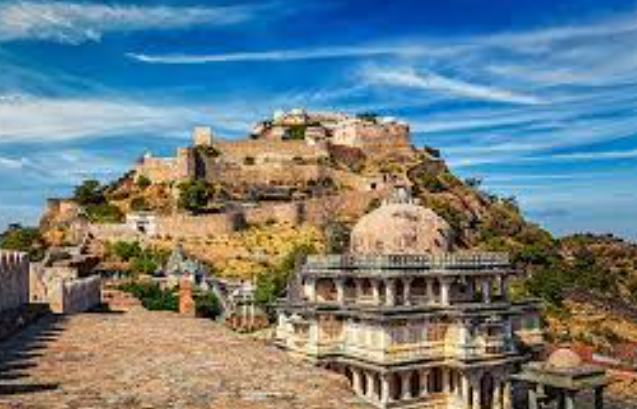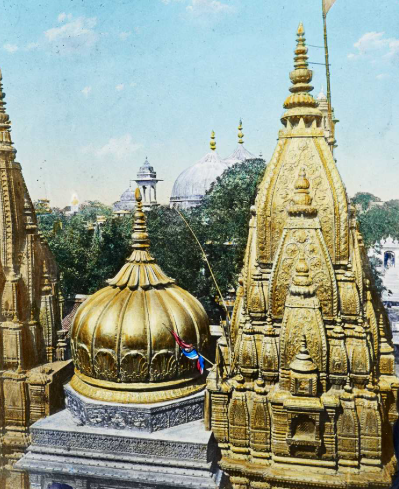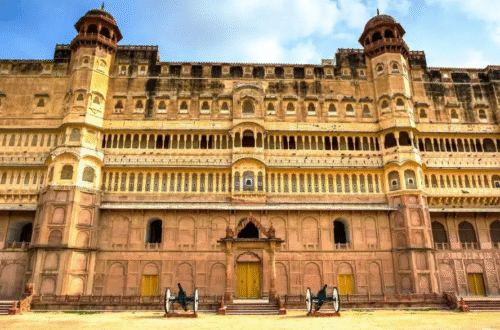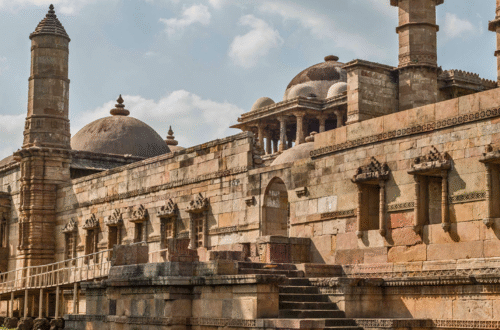Kumbhalgarh Fort History is one of the most famous historical landmarks in India. Known for its massive walls and breathtaking architecture, the fort has been a key site in Rajasthan’s rich history. This article will explore the history, location, and architecture of Kumbhalgarh Fort in a simple and easy-to-understand manner.
History of Kumbhalgarh Fort History
Kumbhalgarh Fort was built during the 15th century by Rana Kumbha, the king of Mewar. Its construction began in 1443 AD, and it was completed after several years of hard work. The fort is one of the largest in Rajasthan and was built as a strategic military outpost to protect the kingdom from invasions. The fort stands as a symbol of the strength and courage of the rulers of Mewar.

The fort played a major role in protecting the Mewar region, especially during the attacks by various invaders. Despite facing several invasions, Kumbhalgarh Fort never fell into enemy hands. It was also the birthplace of Maharana Pratap, one of the greatest warriors in Indian history. This fact adds to the importance of the fort in the cultural and historical context of India.
Location of Kumbhalgarh Fort History
Kumbhalgarh Fort is located in the Rajsamand district of Rajasthan, India. It sits on the westerly range of the Aravalli Hills, about 85 kilometers (53 miles) north of Udaipur, the city of lakes. The fort is positioned at a height of around 1,100 meters (3,600 feet) above sea level, providing it with a strategic advantage for defense.
The surrounding area of the fort is beautiful and scenic, with lush green hills and forests. Visitors can enjoy the tranquil atmosphere and the view of the fort from different points in the region. The fort is well connected to Udaipur and other nearby towns, making it a popular destination for tourists.
Architecture of Kumbhalgarh Fort History
The architecture of Kumbhalgarh Fort is one of its most remarkable features. The fort is known for its massive walls, which stretch over 36 kilometers (22 miles) – the second-longest continuous wall in the world after the Great Wall of China. These walls are not just thick but also high, providing the fort with strong protection. The walls are made of stone and mud, which helped keep the fort secure for centuries.
The Kumbhalgarh Fort is built in the typical Rajput style of architecture, with several gates, temples, and palaces inside its premises. The fort has seven massive gates, known as ‘pols,’ which are made of iron and wood. The entrance to the fort is through these gates, and they are designed to be difficult for invaders to penetrate.
Inside the fort, there are various buildings, including temples, palaces, and water storage systems. The temples inside the fort are dedicated to Hindu gods and goddesses, and their intricate carvings are a testament to the skilled craftsmanship of the builders. The palaces are simple but elegant, with open courtyards and well-designed rooms.
The fort also has a number of water tanks and step wells, which were built to collect and store rainwater. These features helped the people living in the fort to survive during times of drought.
Key Features of Kumbhalgarh Fort History
The Great Wall of Kumbhalgarh
One of the most impressive aspects of the fort is its wall, which is often referred to as the “Great Wall of India.” The wall is made of stone and mud, and it is thick enough to allow horses to walk along it. This makes it not only an architectural wonder but also an engineering marvel. The wall was built to protect the fort from attacks, and its size and strength make it one of the most notable fortifications in the world.

Fortification and Defensive Structures
The fort is surrounded by a strong defense system, including watchtowers, bastions, and battlements. The walls are designed to withstand attacks from enemy forces and protect the people inside. The strategic placement of the fort in the hills also made it difficult for enemies to launch a successful attack.
Temples and Palaces
Kumbhalgarh Fort is home to over 360 temples. These temples are a blend of different architectural styles, with Hindu and Jain influences. Some of the most famous temples inside the fort are the Shree Kumbheshwar Temple and the Vedi Temple.
Apart from temples, there are palaces inside the fort, including the Rana Kumbha Palace. This palace is a beautiful example of the architectural skill of the time. The palace has large open spaces, courtyards, and rooms designed to ensure comfort and security.
Importance of Kumbhalgarh Fort
Kumbhalgarh Fort is not just an architectural wonder; it also holds significant cultural and historical value. It stands as a symbol of the bravery of the Mewar kings, who used the fort as a stronghold to protect their kingdom. The fort is also famous for being the birthplace of Maharana Pratap, a warrior remembered for his courage and resilience.
In 2013, Kumbhalgarh Fort was declared a UNESCO World Heritage Site, which further highlights its importance on a global scale. Its well-preserved structures attract tourists and history enthusiasts from around the world, contributing to the region’s economy and preserving the heritage of Rajasthan. More Fort History
Conclusion: The Legacy of Kumbhalgarh Fort
Kumbhalgarh Fort is a magnificent structure that stands proudly as a part of India’s rich history. Its massive walls, beautiful temples, and historical significance make it a must-visit for anyone interested in Indian history and architecture. The fort not only tells the story of Rajasthan’s past but also showcases the brilliance of Rajput architecture and defense systems.
For travelers, history buffs, and anyone keen to learn about India’s royal past, Kumbhalgarh Fort is an unforgettable experience. It remains an important landmark that continues to inspire awe and admiration for its strength, beauty, and legacy. Find more




One comment on “Kumbhalgarh Fort History : Location and Architecture”